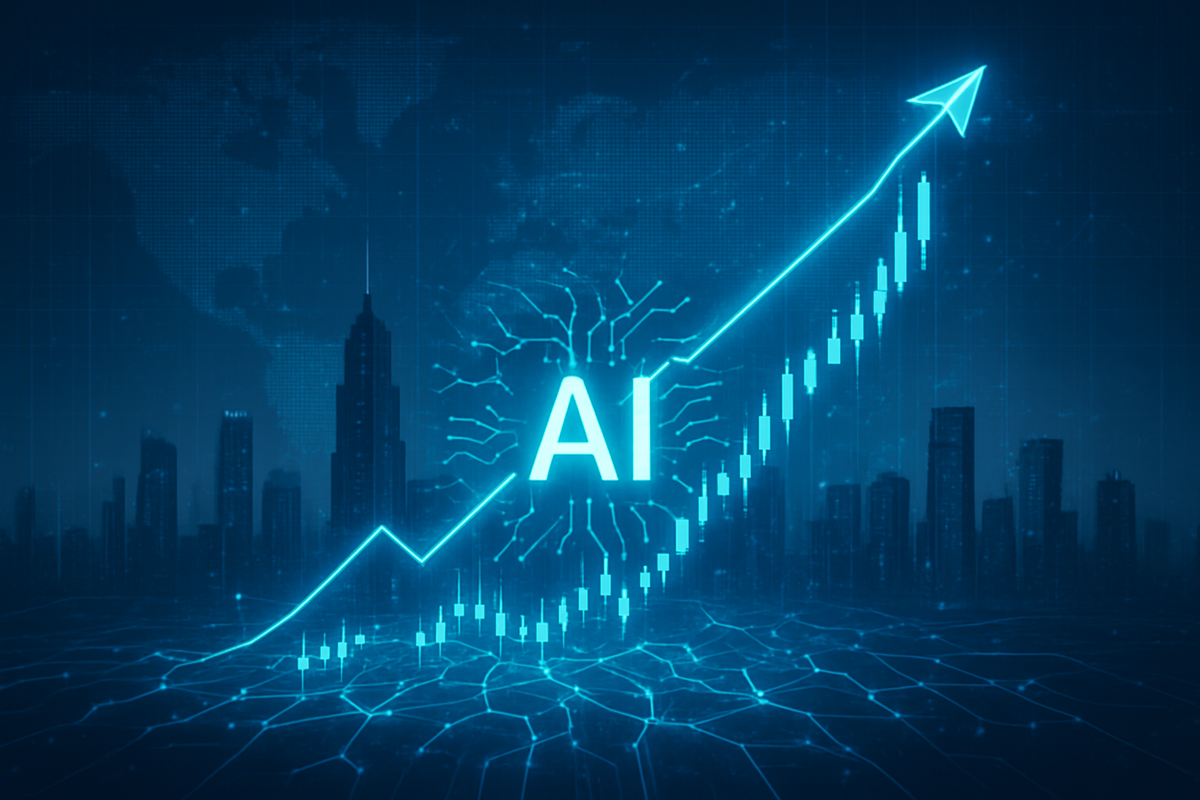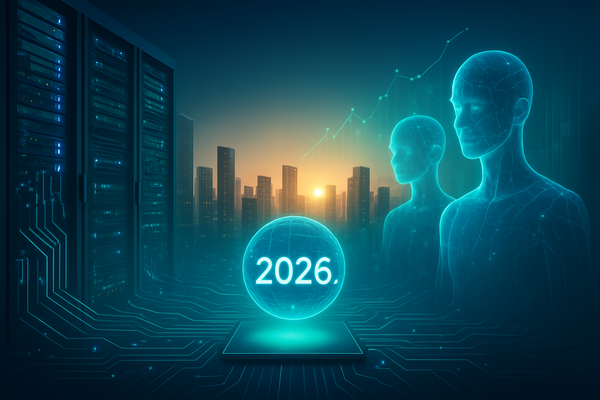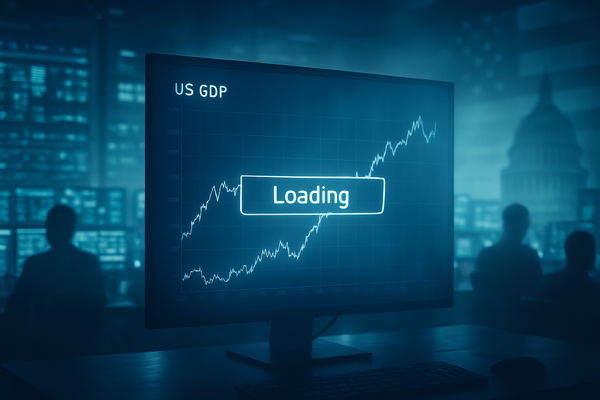Amazon-OpenAI's $38 Billion Alliance Ignites Wall Street, Fueling AI-Driven Market Frenzy

In a monumental development poised to redefine the artificial intelligence landscape, Amazon Web Services (AWS), a subsidiary of Amazon (NASDAQ: AMZN), and OpenAI announced on November 3, 2025, a multi-year strategic partnership valued at an staggering $38 billion. This landmark agreement, spanning seven years, grants OpenAI unprecedented access to AWS's vast cloud infrastructure, a move that immediately sent shockwaves of optimism through financial markets globally. The deal underscores the accelerating trend of AI-related collaborations and investments driving significant market gains, as investors flock to capitalize on the transformative potential of artificial intelligence.
The announcement served as a powerful catalyst for the tech sector, with Amazon's shares experiencing a robust surge in premarket trading, signaling renewed investor confidence in its aggressive AI strategy. This partnership not only solidifies AWS's position as a critical enabler of cutting-edge AI development but also highlights the escalating arms race among tech giants to provide the computational backbone necessary for the next generation of AI models. The deal's sheer scale and strategic implications are further amplifying the narrative that artificial intelligence is the primary engine behind current market uptrends, pushing valuations to new highs across the board.
Unpacking the Megadeal: A Deep Dive into the AWS-OpenAI Partnership
The $38 billion, seven-year strategic partnership between Amazon Web Services and OpenAI is far more than a simple vendor-client agreement; it represents a profound realignment in the AI ecosystem. Under the terms of the deal, OpenAI will gain immediate and extensive access to AWS's world-class infrastructure, specifically designed to power and scale its core artificial intelligence workloads. This includes hundreds of thousands of state-of-the-art NVIDIA (NASDAQ: NVDA) GB200s and GB300s GPUs, delivered through Amazon EC2 UltraServers. The agreement also provides for the capability to expand to tens of millions of CPUs, crucial for rapidly scaling agentic workloads, with OpenAI expected to deploy all the included capacity by the end of 2026 and potential further expansion into 2027 and beyond. OpenAI's CEO, Sam Altman, emphasized the critical need for "massive, reliable compute" to scale frontier AI, stating that the partnership with AWS significantly strengthens the broad compute ecosystem to make advanced AI accessible to everyone.
The timeline leading up to this moment has been characterized by intense competition and strategic maneuvers in the cloud and AI sectors. While Microsoft (NASDAQ: MSFT) has long been OpenAI's primary and long-term cloud backer, recent restructuring at OpenAI granted it greater flexibility to engage with other cloud providers. This partnership with AWS signifies a pivotal strategic shift for OpenAI, as it actively diversifies its cloud infrastructure, mitigating vendor lock-in and addressing the ever-growing demand for compute capacity. This move aligns with an emerging multi-cloud strategy observed among leading AI companies, a testament to the immense and specialized infrastructure requirements of advanced AI development.
Initial market reactions were overwhelmingly positive. Amazon's shares climbed between 4.5% and 5.4% in premarket trading on the day of the announcement, reaching a new record high and adding billions to its market capitalization. Similarly, shares of Nvidia, a key supplier of the high-performance GPUs central to the deal, rose by nearly 2.9% to 3%. The deal also contributed to a broader sense of optimism across the tech sector, particularly among the "Magnificent Seven" megacaps, which collectively saw a 1.5% climb, invigorating the entire artificial intelligence trade. However, amidst the euphoria, some market watchers have voiced concerns regarding the sustainability of the massive AI spending spree, citing OpenAI's reported commitment of approximately $1.4 trillion to develop and sustain its AI infrastructure against its annual revenue of about $13 billion, sparking debates about a potential tech investment bubble.
Corporate Fortunes: Winners and Losers in the AI Arms Race
The monumental AWS-OpenAI partnership is set to create distinct winners and losers across the corporate landscape, fundamentally reshaping competitive dynamics in the technology and AI sectors. Foremost among the beneficiaries is Amazon (NASDAQ: AMZN). This deal is a colossal victory for its Amazon Web Services (AWS) division, solidifying its position as the undisputed leader in cloud infrastructure for AI. By securing OpenAI as a major client, Amazon not only gains a significant revenue stream but also enhances its prestige and attractiveness to other AI innovators seeking robust, scalable compute solutions. The partnership validates AWS's massive investments in AI-specific hardware and services, including its custom-built AI chips like Trainium and Inferentia, and its Bedrock and SageMaker platforms. This strategic win positions Amazon to capture an even larger share of the burgeoning AI infrastructure market, which is projected to grow exponentially.
OpenAI itself emerges as a significant winner, securing the critical infrastructure needed to fuel its ambitious frontier AI development. Access to hundreds of thousands of state-of-the-art NVIDIA (NASDAQ: NVDA) GPUs on AWS's EC2 UltraServers provides OpenAI with the computational horsepower necessary to train larger, more complex models and scale its agentic workloads. This diversification of its cloud providers beyond Microsoft (NASDAQ: MSFT) also offers strategic flexibility, reduces vendor lock-in risks, and ensures business continuity, crucial for a company at the forefront of AI innovation. NVIDIA (NASDAQ: NVDA) is another clear winner. As the primary supplier of the high-performance GPUs central to this deal, Nvidia's dominance in AI hardware is further cemented. The massive scale of GPU deployment outlined in the partnership ensures continued robust demand for Nvidia's cutting-edge technology, driving its revenue and market leadership in the AI chip sector.
On the other hand, Microsoft (NASDAQ: MSFT), while still a major partner to OpenAI, might face indirect challenges. The deal signals OpenAI's strategic move towards a multi-cloud approach, lessening its exclusive reliance on Azure. While Microsoft's initial investment and deep integration with OpenAI remain significant, this partnership with AWS could dilute some of the exclusive advantages Microsoft previously enjoyed. Other cloud providers like Google Cloud (NASDAQ: GOOGL) and Oracle (NYSE: ORCL), though also engaging in smaller-scale cloud agreements with OpenAI, might find the competitive landscape even more challenging as AWS asserts its infrastructure dominance with this landmark deal. Furthermore, smaller AI startups without the capital or strategic partnerships to secure vast compute resources could find themselves at a disadvantage, struggling to compete with the infrastructure might now wielded by OpenAI through its AWS alliance. The rising cost of AI compute, exacerbated by such massive deals, could create a higher barrier to entry for nascent players.
The Broader AI Revolution: Global Impact and Market Trends
The Amazon-OpenAI deal is not an isolated event but a powerful manifestation of a broader, global artificial intelligence revolution that is profoundly reshaping stock markets worldwide. This event fits squarely into the overarching industry trend of hyperscale cloud providers becoming the indispensable backbone for AI innovation. The race to build and deploy advanced AI models, from large language models (LLMs) to specialized AI agents, demands unprecedented computational resources, making robust and scalable cloud infrastructure a critical competitive differentiator. The deal underscores the increasing strategic importance of owning or securing access to vast GPU clusters, custom AI chips, and advanced data centers. It also highlights the shift towards a multi-cloud strategy among leading AI companies, a trend driven by the need for redundancy, cost optimization, and access to specialized services across different providers.
The ripple effects of this partnership are expected to be far-reaching, impacting competitors, partners, and the broader regulatory environment. For rival cloud providers, the deal intensifies the "cloud arms race," compelling them to accelerate their investments in AI infrastructure, develop proprietary AI chips, and forge their own strategic alliances with AI innovators. Companies like Google (NASDAQ: GOOGL), with its Gemini and PaLM offerings, and Microsoft, with its continued deep ties to OpenAI, will undoubtedly double down on their efforts to attract and retain top-tier AI clients. The deal also shines a spotlight on the critical role of hardware manufacturers like Nvidia, whose technology is now more central than ever to the global AI buildout. From a regulatory perspective, the increasing consolidation of AI compute power among a few hyperscale providers could raise concerns about market dominance, potential anti-competitive practices, and data governance, potentially leading to increased scrutiny from antitrust bodies globally.
Historically, this era of intense technological investment and market enthusiasm for AI draws parallels to the dot-com bubble of the late 1990s, where speculative fervor led to inflated valuations. However, proponents argue that unlike the dot-com era, AI's tangible applications and profound impact on productivity and innovation across virtually every industry lend it a more fundamental and sustainable growth trajectory. Nevertheless, the concerns about a potential "AI bubble," fueled by massive spending commitments like OpenAI's reported $1.4 trillion infrastructure target, suggest that investors are navigating a complex landscape where genuine innovation coexists with speculative risks. The global trend of AI's influence on stock markets extends beyond the US, with significant market gains observed in Asia and Europe as well. In Asia, tech giants like Tencent (HKG: 0700) and Alibaba (NYSE: BABA) are heavily investing in AI research and infrastructure, driving their respective market valuations. Similarly, European companies involved in AI development, robotics, and automation are seeing increased investor interest, reflecting a worldwide recognition of AI as a key economic driver.
The Road Ahead: Navigating the AI-Driven Future
The Amazon-OpenAI partnership sets a compelling precedent for what comes next in the rapidly evolving AI landscape. In the short term, we can anticipate a continued surge in demand for high-performance computing infrastructure, particularly specialized AI chips and cloud services. This will likely translate into sustained growth for companies like Nvidia (NASDAQ: NVDA) and the major cloud providers. The deal also signals a potential acceleration in the development and deployment of advanced AI models, as OpenAI now has even greater resources to scale its ambitions. We may see new breakthroughs in AI capabilities, especially in agentic AI and multi-modal models, as the computational bottlenecks are eased.
In the long term, this partnership could catalyze significant strategic pivots across the tech industry. Companies that previously relied on a single cloud provider for AI workloads may increasingly adopt multi-cloud strategies to ensure resilience and access to diverse specialized services. This could intensify competition among cloud providers, driving further innovation in AI-optimized infrastructure and pricing models. Market opportunities will emerge for companies providing AI-specific software, tools, and services that can leverage these enhanced compute capabilities. Conversely, challenges may arise for smaller players struggling to keep pace with the massive infrastructure investments of tech giants, potentially leading to further consolidation in the AI startup ecosystem. Regulatory bodies will likely increase their focus on the implications of such large-scale AI infrastructure deals, particularly concerning market concentration, data privacy, and ethical AI development.
Potential scenarios and outcomes include a continued "AI supercycle" where technological advancements drive sustained economic growth and market expansion, or, conversely, a period of over-investment and consolidation if the returns on massive AI spending do not materialize as quickly as anticipated. Another scenario involves a deepening of the AI arms race, with nations and corporations vying for supremacy in AI development, leading to geopolitical implications. Investors should watch for further strategic alliances between AI developers and infrastructure providers, the pace of AI model development and commercialization, and any regulatory interventions that could shape the competitive landscape. The ability of companies to effectively monetize their AI investments and translate technological prowess into sustainable profitability will be key determinants of future market success.
MarketMinute Wrap-Up: AI's Enduring Impact
The $38 billion strategic partnership between Amazon Web Services and OpenAI is a watershed moment, underscoring the profound and accelerating impact of artificial intelligence on global financial markets. This deal is a testament to the insatiable demand for computational power required to fuel the next generation of AI, propelling companies like Amazon (NASDAQ: AMZN) and Nvidia (NASDAQ: NVDA) to new heights. It highlights a critical shift towards multi-cloud strategies within the AI industry, as innovators seek diversified and robust infrastructure to scale their ambitious projects.
Moving forward, the market will continue to be heavily influenced by AI-related developments. Investors should anticipate sustained capital expenditure in AI infrastructure, ongoing innovation in AI models and applications, and an intensified competitive landscape among tech giants. The key takeaways from this event are clear: AI is not merely a buzzword but a fundamental economic driver, demanding unprecedented investment and strategic collaboration. The market's reaction demonstrates strong confidence in AI's transformative potential, yet prudent investors will also keep a watchful eye on the sustainability of current valuations and any emerging regulatory frameworks. The lasting impact of this deal will be seen in how it accelerates AI development, reshapes cloud computing, and influences the global technological balance of power for years to come.
This content is intended for informational purposes only and is not financial advice



